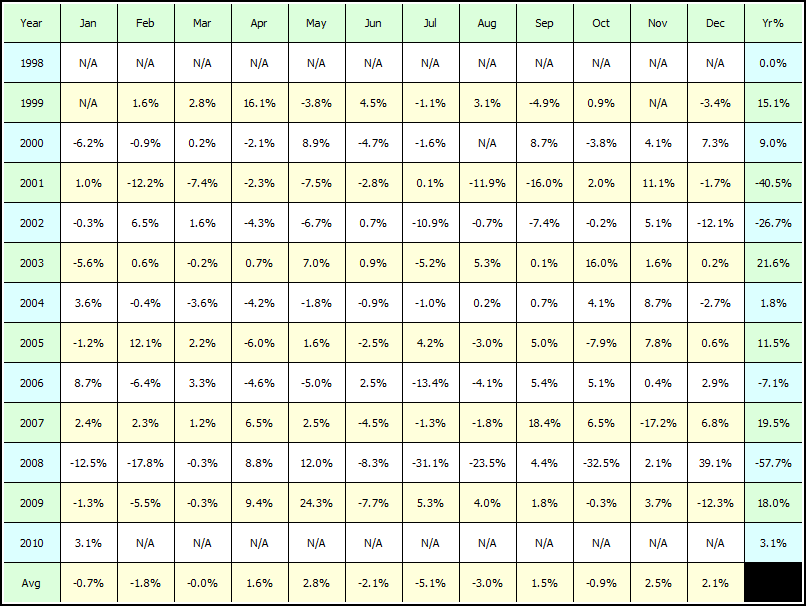One of the benefits of blogging is that it offers opportunities to discuss ideas with some talented folks. After seeing I had linked to his site, John from Fundztrader left a very detailed comment concerning the FSF Rotation Strategy. His links provide ideas on how to improve a FSF rotation strategy. These ideas will be incorporated once we get to the real fun of improving the basic system.
I was able to download FSF data from yahoo for every fund except for FSPFX, the paper & forest products fund. I ran the test with the actual FSF data, and results improved over the test with the ETFs. I did not backtest with the adjusted closes, so the results do not include dividend adjustments. I’m going to go ahead and post the results anyway as I think it might be very instructive to see a comparison of the strategy run without vs. with adjustments for dividends.
Edit: The testing in this article was using the adjusted closes after all, so the results do include dividend adjustments.
What most improved the results was changing the code so that the rotation occurs exactly as required by the rules. The strategy now has the fund held for at least 30 calendar days, (rather than rotating on the 2nd day of each new month) and then begins the calculation to see if a rotation should occur.
The Results
The System Shows Promise…
We now have a system with a positive CAGR of 11.65%. Over the same period the S&P500 has a CAGR of 7.57%. Also, note the performance in 2009…
As John noted in his comments, the equity curve shows how volatile the system is. It is also evident that the system gets hurt during bear markets. It should be fairly simple to improve these shortcomings, and an attempt will be presented in Part 3.
If you would like an Excel sheet with all the trades, email me: Woodshedder73 over at gmail with the subject line of Rotation Strategy Trades.
Comments »










